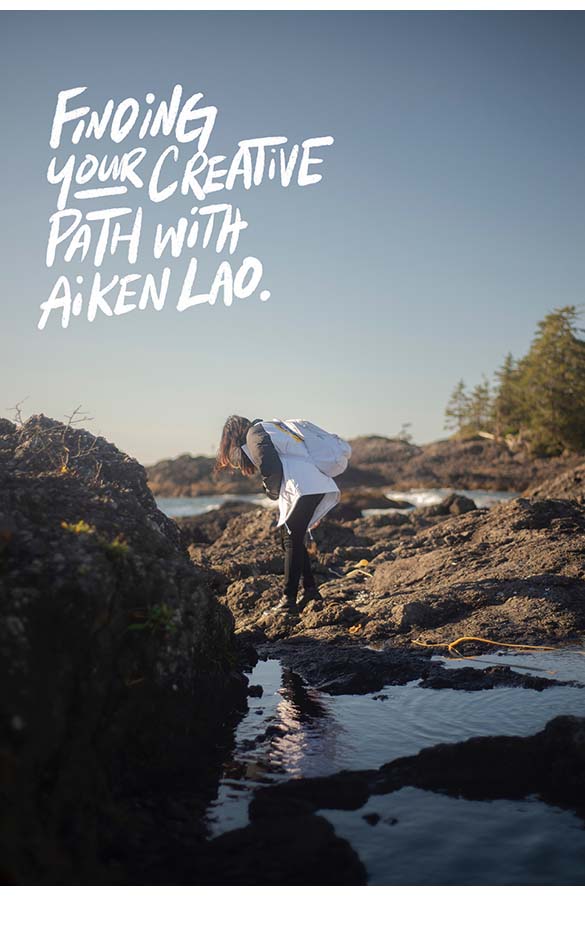
Early last year, we decided to get an intern to help us all out at the studio. After we put out a call on Instagram, we had a few inquiries but one stood out and it was from a UBC Sauder business student named Aiken Lao. Although she was a business student from UBC, she had a real strong interest for creativity. She was a rare breed. A business student with a visual arts portfolio, showcasing her illustration, photography and design work. The diversity in her work made her an ideal candidate as she was able to help all three of us out at the studio. With Hubert Kang, a photographer, Annie Chen, a surface designer and myself an illustrator and art director. She was a rising triple threat with an opportunity to be able to sample all three disciplines under one roof. It’s sort of like getting whisky flights but for jobs without the hangover.
Over the course of just a few months, Aiken proved to be a real asset at the studio by helping out on photoshoots, painting murals, drawing storyboards, designing logos, researching visual references, attending client meetings and even taking the most detailed notes in lightning speed. It wasn’t long before we decided to raise her rates for the remainder of the year until she graduated in December of 2018.
Interestingly, Aiken’s parents were never a fan of the idea of her pursuing a creative career. Although she initially applied to Emily Carr, she ultimately chose UBC’s Sauder School of Business to please her parents. Fast forward to post-graduation, Hubert Kang, and I decided to offer her a one-year full-time contract gig at the studio to become our Studio Manager. She now oversees our projects, manages our workflow and helping out with a variety of tasks such as running the retail store and doing actual work like drawing storyboards, designing logos, painting murals and much more.
When Aiken first started, she had no clue how the creative community worked but she’s now a little less lost (we hope) and is now convinced that artists don’t need to fit the ‘starving artist’ stereotype to make a creative career work. Personally, I was lucky enough to kick start my own career in advertising as an art director for almost 2 decades which helped me get exposed to countless artists, musicians, photographers, animators, writers and more. Over this time, I saw budgets, managed artists, supervised shoots, managed creative teams, worked with countless directors on tv shoots and it was through this experience that I learned how to now run my own art and design studio.
Knowing how many young and talented creative folks are out there trying to break into the business but unsure how to, I hope this little blog post will help shed some light into your career path.
Illustrations by Aiken Lao
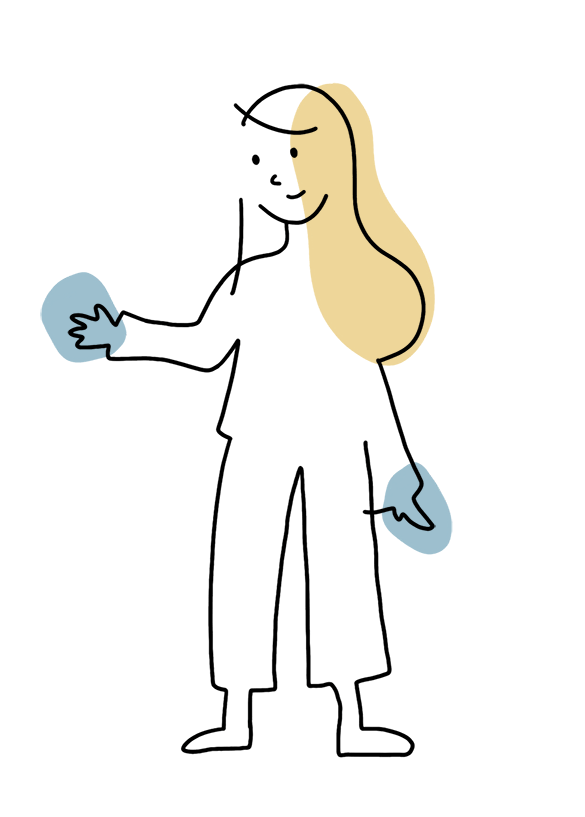
How did you find out about the internship?
From my wonderful friend Konstantin Prodanovic. He, our friend—Tim Hoggan—and I worked as the core design team at The Ubyssey, The University of British Columbia’s student newspaper, a few years ago and still stay in touch. Konstantin forwarded an Instagram post to me about Production Road looking for an intern and I jumped at the opportunity. Being a business student, I had almost given up on illustration and design at that point because it didn’t seem like I had the education or experience for it. When our studio mate, Hubert Kang, messaged me back I was shocked. I definitely didn’t expect to get an interview through an Instagram message!
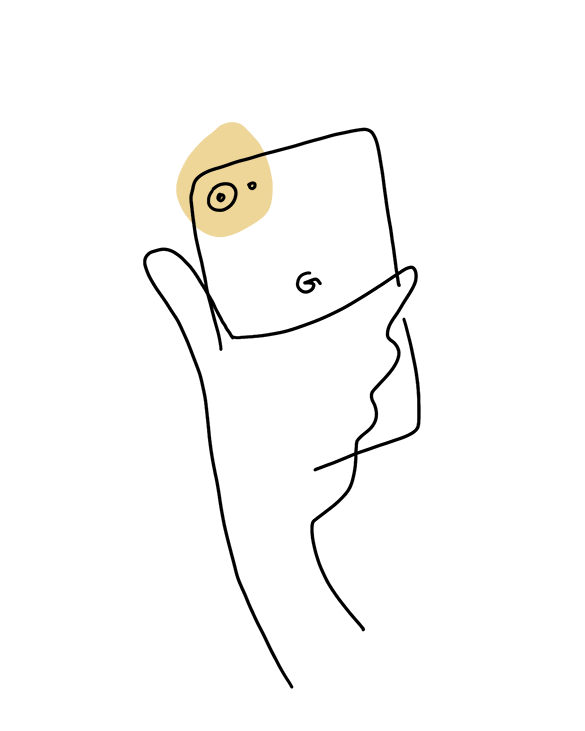
What was your initial expectation of the internship and how did those expectations differ in the end?
From what I heard from other creative interns at big advertising agencies, I expected to produce sketches, ideas, research, or taglines that would be lost in the production process and never see the light of day. Not to say that sounds terrible, but my perception was that interns often couldn’t see the results of their work because they’re still in the process of learning, therefore their work wouldn’t be accepted or would be heavily edited. This wasn’t the case at Production Road.
One of my first big tasks as an intern was to create a storyboard, which is something I’ve never done before, for an animation. Carson guided me through the process, and the end product was a storyboard that our animators referred to when bringing Carson’s drawings to life. It was amazing to see something I was so involved in be translated from loose sketches to a full animated clip on our client’s website. It was a very rewarding project.
What did you hope to get out of the internship?
I hoped to learn more about how design and illustration, especially for freelancers, worked. The image of a starving artist making ends meet is strong, even for someone like me who knows it’s not true… I think. I also wanted to learn the process of how professionals in the industry go about creating final works and collaborating with their peers. But, to be honest I was so confused about my future I didn’t really know what to expect.
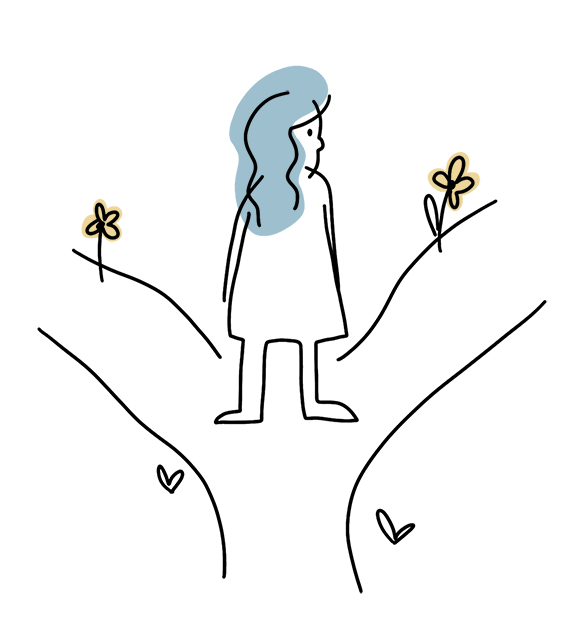
You mentioned that you were quite lost in terms of the direction of what you want to do in the future. Has this internship helped you find your path?
Part of me has an idea of what I want to strive for, while another part of me still feels lost. I think the beauty of being lost is that you’re still open to opportunities and trying new paths. Having a constrictive, defined goals limits our possibilities.
In terms of what I want to do, I’ve started to realize that I do have a lot of time. It doesn’t seem like it, despite people telling me that I’m still young, because I’ve been underestimating how much I can do and change in a span of, let’s say, a year. Time passes by quickly, but a human’s ability to adapt, learn, and achieve within a short period of time is equally awe-inspiring.
My dream is to be a freelance illustrator and designer. Initially, I thought this was unreachable and too risky to try, but then I realized what do I have to lose? Worst case scenario, I can always apply for a desk job later. The regret of not trying to achieve my dream scares me more than the fear of missing out on an opportunity to have a stable career.
What have been the biggest challenges working at the studio?
I would have to say having self-discipline. When I was first given the opportunity to work as an intern at Production Road, I was placed under a probation period and told that I could come in anytime and work whenever I was free. The idea of not being assigned a structure was strange to me. I gave myself some assigned hours and left early on Fridays. However, as I got more involved in tasks I found it more rewarding for me to stay and be there for as long as possible; I learned the most when I was in the office and learning from all three artists here.
During my time at the studio, I’ve seen an improvement in my organization skills and having more discipline in finishing my work on time. There’s a lot to do here, but everyone at the studio has been really kind in making sure I don’t stress out. It’s a wholesome work environment! My next big goal is to come to work earlier in the morning. I’m great at sleeping, it’s a blessing and a curse.
Between all the three different disciplines at the studio, what are your top 3 most favourite types of work?
It’s really hard to say, I don’t think I have three definite favourites. I’m indoors most of the time so I find it really rewarding to go out and work on projects like murals or helping out on photoshoot sets. Although running around and doing physical tasks is exhausting, it’s nice because it’s the rare chance to get out and enjoy the outdoors. I also have the opportunity to learn how, for example, Carson sets up and prepares for his murals or Hubert organizes his shoot with his crew. The amount of exposure I get at Production Road to all sorts of fields is kind of insane—surface design, photography, illustration, creative direction, producing, copywriting—I’ve been fortunate enough to see bits of it all.
What would your advice be to new art and design graduates like you seeking a paid internship at a design studio or advertising agency?
Persevere and be humble. You’re going to be rejected, but eventually, there will be an opportunity. If a chance does pop up take it, work at it to the best of your abilities, and make it a learning experience to improve yourself. If opportunities don’t come up, work towards it and like-minded individuals will find and enrich you. If a studio or agency does reject you, ask them why and improve upon their advice. It’s amazing how many seasoned veterans are willing to take time out of their day to chat with budding artists.
Oh, and also talk to people. I was an introvert that hated the idea of human interaction in any capacity, but when I started asking people how their day was or being more receptive to their comments I found myself learning so much about people. One man I spoke to at the grocery check out told me how he was staying positive during the recent passing of his husband, and another woman I sat beside at a coffee shop was a primary school teacher playing hooky. It never hurts to chat with people for work or non-work purposes, just be compassionate and have an open mind!

What are the top 3 favourite projects you’ve worked on at the studio?
I’ve done so many amazing projects in the studio, but the top three that come to mind are helping Carson with his mural at the Fisherman’s Wharf, being an assistant producer at Hubert’s Pacific Sands Tofino photoshoot, and drawing storyboards.
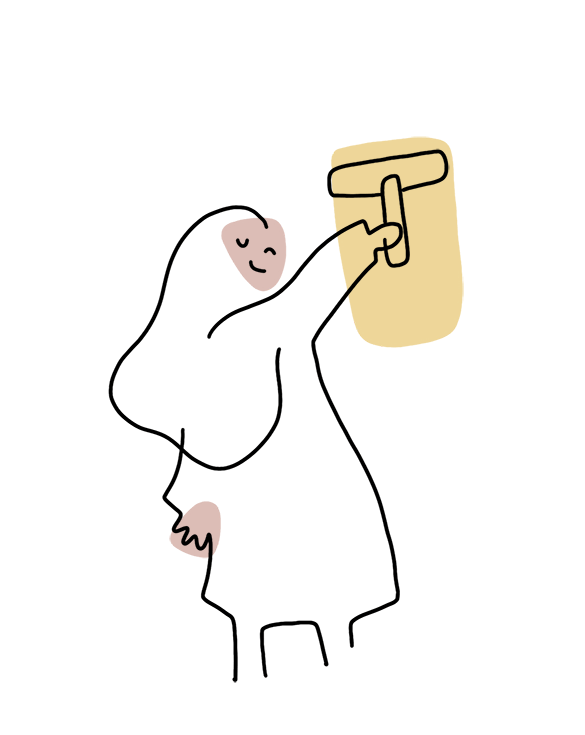
The Fisherman Wharf mural was my first time using spray paints and learning how to use a projector to map a mural, so it was a great learning experience for me. I also just love being outside and getting my hands dirty. Carson took the effort to explain how everything worked for me and made sure all our needs were attended to as we worked.
Hubert’s photoshoot in Tofino was an amazing trip. Aside from being able to stay in Tofino for a few days, since the photo shoot was small, I was able to help with a huge array of tasks. Seeing how everyone works on set and the photos that result from all our work is so rewarding, and Hubert is just so much fun to work with!
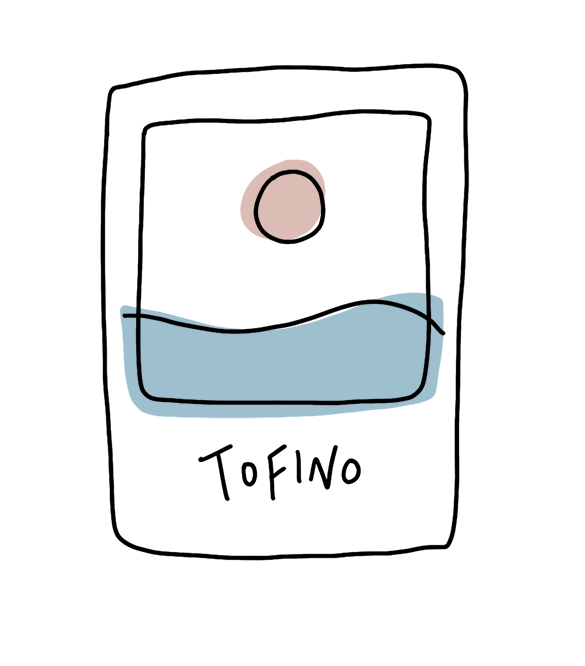
Overall, I love drawing storyboards. It feels like such a central job that ties everyone’s ideas together and directly helps translate the final production. I enjoy being useful and involved, so storyboarding is a task that’s especially fun for me.
What are your least favourite types of work at the studio?
I don’t have any jobs that I specifically dislike. Sometimes, I’m in the mood to organize while other times I want to be creative and draw. It really depends on the day.
I would say the least glamorous tasks around the office would be things like estimates, accounting, and reading contracts, but I’m learning so much when doing those tasks. It’s so essential to learning the backend work when running a business so I’m very thankful to be involved in this work, and it feels nice to lessen the load of the studio artists so they can focus on their art.
